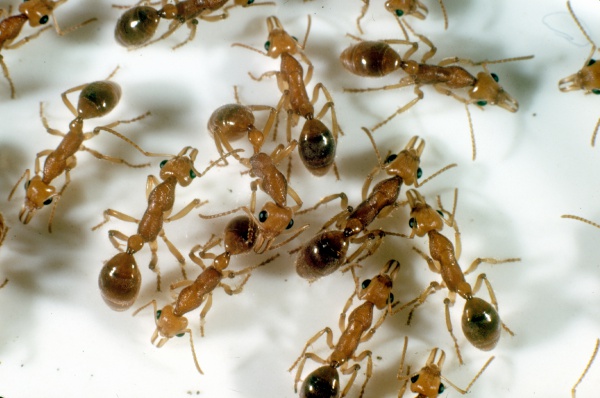Facts About Nothomyrmecia
Nothomyrmecia, often referred to as the "dinosaur ant" or "dawn ant" is a rare and intriguing genus of ants that comprises a single species: Nothomyrmecia macrops. These ants are indigenous to South Australia, where they thrive in old-growth mallee and Eucalyptus woodlands. However, their precise range remains somewhat enigmatic. Unfortunately, Nothomyrmecia is listed as Critically Endangered by the IUCN due to threats such as habitat destruction and climate change.
These ants are relatively small, measuring between 9.7 to 11 mm in length, with workers that are monomorphic, meaning they are all of the same size. Nothomyrmecia exhibits several unique behaviors and characteristics: they are strictly nocturnal, forage alone, and rely heavily on their vision for navigation. Their body structure is considered quite primitive, making them one of the most "ancient" ants still extant today. They possess a retractable stinger capable of delivering a painful sting, vestigial wings, and a distinctive sting apparatus.
First described in 1934, Nothomyrmecia was subsequently lost to science until its rediscovery in 1977, generating significant excitement among scientists. Since then, researchers have extensively studied these ants, examining their physical traits, behavior, ecology, and even their chromosomes. Some scientists propose that Nothomyrmecia might be related to an ancient fossil ant genus called Prionomyrmex, based on morphological similarities.
Conservationists are deeply concerned about the survival of Nothomyrmecia. Habitat destruction, fragmentation, and climate change pose significant threats to their existence. Efforts to protect these ants include conducting surveys, safeguarding their habitats, and raising public awareness. While many colonies are found in unprotected areas, some have been discovered in conservation reserves, highlighting the importance of preserving their natural habitats.
Nothomyrmecia's claim to fame is its status as a "living fossil" and one of the most primitive ants alive today. Its rediscovery has made it a prominent topic in the entomological world. The small town of Poochera, where the ant was rediscovered, has embraced Nothomyrmecia as a symbol. The town now attracts ant enthusiasts and researchers, transforming it into a hub for studying this remarkable species.
